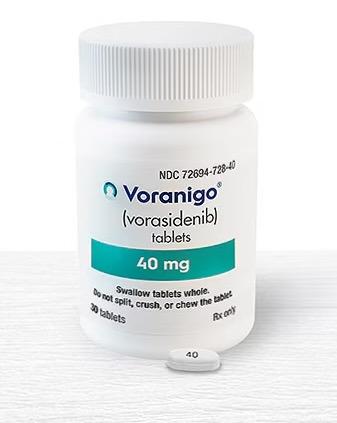Vorasidenib Disease Interactions
There are 3 disease interactions with vorasidenib.
Vorasidenib (applies to vorasidenib) liver dysfunction
Moderate Potential Hazard, Moderate plausibility. Applicable conditions: Liver Disease
The pharmacokinetics and safety of vorasidenib have not been studied in patients with severe liver dysfunction (Child-Pugh C); these patients should be monitored for increased adverse reactions and the dosage should be modified for adverse reactions as recommended in the manufacturer product information. No dosage adjustment is recommended for patients with mild or moderate liver dysfunction (Child-Pugh A or B).
Vorasidenib (applies to vorasidenib) renal dysfunction
Moderate Potential Hazard, Moderate plausibility.
The pharmacokinetics and safety of vorasidenib have not been studied in patients with CrCl up to 40 mL/min or renal dysfunction requiring dialysis; these patients should be monitored for increased adverse reactions and the dosage should be modified for adverse reactions as recommended in the manufacturer product information. No dosage adjustment is recommended for patients with CrCl greater than 40 mL/min.
Vorasidenib (applies to vorasidenib) smoking
Moderate Potential Hazard, Moderate plausibility.
Tobacco smoking may decrease vorasidenib plasma levels, which may reduce its antitumor activity. Patients and caregivers should be advised to inform their health care provider if they currently smoke tobacco.
Switch to professional interaction data
Vorasidenib drug interactions
There are 440 drug interactions with vorasidenib.
Vorasidenib alcohol/food interactions
There is 1 alcohol/food interaction with vorasidenib.
More about vorasidenib
- vorasidenib consumer information
- Check interactions
- Compare alternatives
- Reviews (1)
- Side effects
- Dosage information
- During pregnancy
- Drug class: miscellaneous antineoplastics
- En español
Related treatment guides
Drug Interaction Classification
| Highly clinically significant. Avoid combinations; the risk of the interaction outweighs the benefit. | |
| Moderately clinically significant. Usually avoid combinations; use it only under special circumstances. | |
| Minimally clinically significant. Minimize risk; assess risk and consider an alternative drug, take steps to circumvent the interaction risk and/or institute a monitoring plan. | |
| No interaction information available. |
See also:
Further information
Always consult your healthcare provider to ensure the information displayed on this page applies to your personal circumstances.


